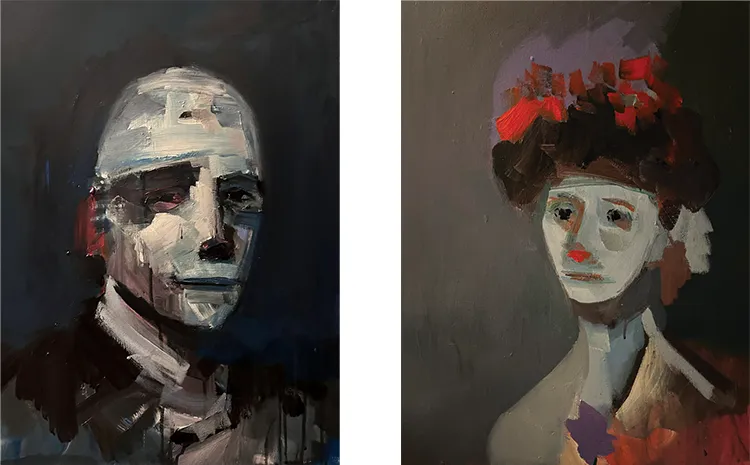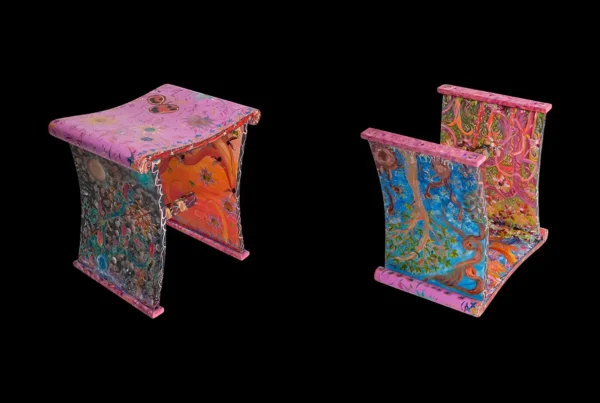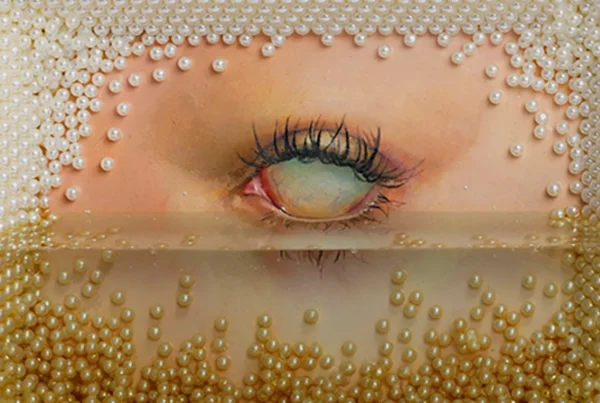Rediscovering Art Through a Personal Lens
Erica Parsons, known by her artistic moniker Parsons People, has cultivated a unique identity in the art world, shaped by years of intermittent painting and personal growth. Her journey is as much about artistic expression as it is about reclaiming a part of herself that has long been intertwined with her creative process. Beginning her artistic path in her early 20s, Parsons painted her first figure on the back of a pizza box—a humble origin that unexpectedly marked the start of her lifelong connection with her “people.” What initially began as a quest to decorate her apartment soon evolved into a deeply personal artistic pursuit. However, after a challenging early experience at an art festival where she failed to make a single sale, she temporarily walked away from painting.
In her 30s, Parsons found herself drawn back to her craft, gaining some recognition and even producing a calendar featuring her people. Yet, life’s responsibilities—starting a magazine and becoming a mother—took precedence, sidelining her art once again. It wasn’t until she turned 50 that Parsons made the conscious decision to fully embrace painting once more, with a renewed commitment and urgency. This time, her artistic process became not only about creating but about honoring the dreams she had set aside, both for herself and as an example for her children.
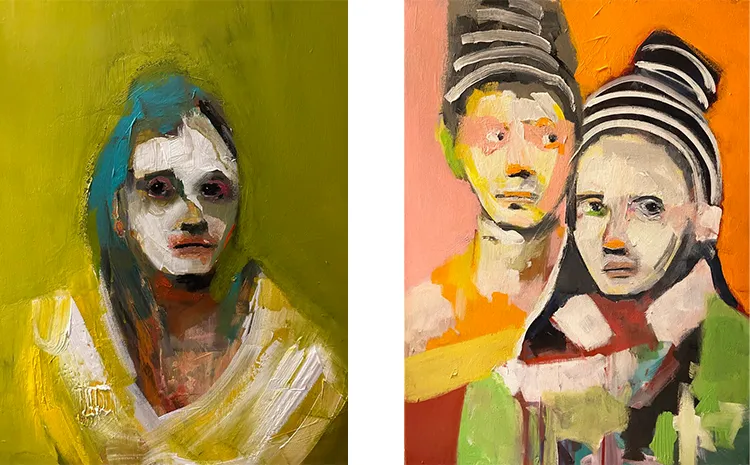
Parsons People: Faces Emerging from Abstraction
Parsons’ work is defined by an evocative and fluid style of portraiture that masterfully blurs the lines between figuration and abstraction. Her portraits, which depict fragmented and obscured human faces, offer viewers a space for personal interpretation and emotional engagement. Rather than focusing on perfect anatomical accuracy, Parsons prioritizes the feeling her work evokes, trusting her instincts and emotional connection to her subjects over technical precision. This raw, unfiltered approach to painting allows her figures to emerge organically, with loose brushstrokes that seem to simultaneously reveal and conceal the essence of her “people.”
The faces in her paintings often lack defined features, creating an intentional ambiguity that invites the viewer to engage with the work on a deeper emotional level. Through this artistic fragmentation, Parsons’ subjects exist in a liminal space—partially seen, yet filled with unspoken depth. The absence of clear facial details leaves room for a sense of mystery and introspection, echoing themes of identity, memory, and the complexities of the human condition. Her portraits are deeply personal, yet universally relatable, as they capture the tension between the visible and the obscured, the known and the unknown.
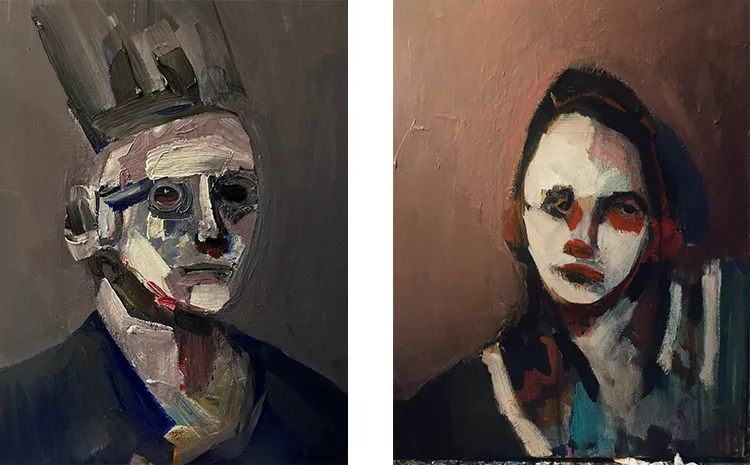
Color as an Emotional Catalyst
In Parsons’ work, color plays a pivotal role, acting as an emotional language that adds layers of meaning to her portraits. She uses bold, non-naturalistic hues that create striking contrasts, pushing her figures beyond mere representation and into the realm of psychological exploration. Muted tones, often reminiscent of shadow and isolation, are juxtaposed with sudden bursts of vibrant color that inject energy and complexity into the piece. These unexpected color pairings not only enhance the emotional intensity of her work but also challenge traditional ideas of portraiture, emphasizing feeling over form.
The deliberate interplay of shadow and light, along with her textured application of paint, gives Parsons’ figures a sense of movement and depth. This visual dynamic, combined with the expressive use of color, underscores the emotional weight her subjects carry. Each portrait seems to oscillate between presence and absence, reflecting the transient nature of identity and the fluidity of self-perception. The way Parsons manipulates color and texture heightens the emotional resonance of her figures, making each piece a meditation on the layers of human experience.
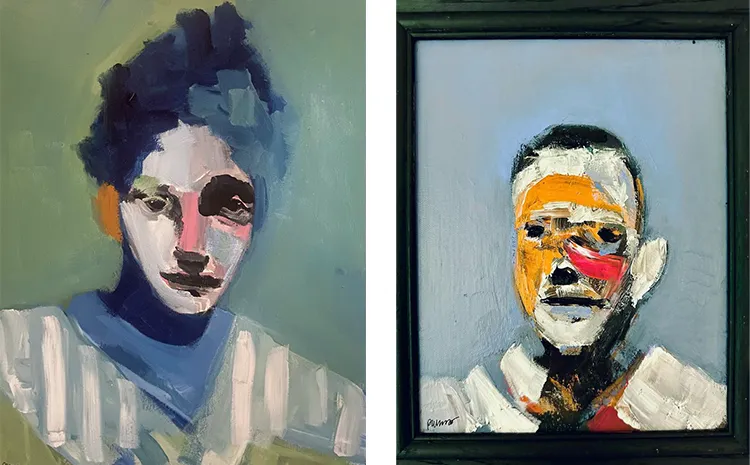
Parsons People: An Intimate Connection Between Artist and Subject
For Parsons, painting is more than a technical endeavor; it is a deeply personal and almost spiritual experience. She speaks of waiting for a “magical moment” when her people, as she calls them, introduce themselves to her. This moment marks a connection between the artist and the subject, a bridge between creativity and emotional truth. Whether using brushes or her fingers, Parsons allows the process to guide her, unburdened by expectations of perfection. Instead, she trusts the emotional flow that shapes her work, resulting in pieces that feel alive with presence and meaning.
Even in moments when she steps away from painting, her people remain with her, waiting patiently for their moment of creation. Parsons’ artistic practice is intertwined with her personal life in such a way that her figures seem to embody her journey—sometimes fragmented, sometimes whole, but always in process. Her work is not about replicating reality but about capturing the essence of her subjects, an essence that sometimes emerges in unexpected ways. As she once remarked, even when she attempts to paint a landscape or a still life, the piece inevitably transforms into a person, underscoring the intimate connection she shares with the human form.
Parsons’ portraits are not just about the figures they depict but about the emotional landscape they evoke. Whether shown individually or as couples, as in some of her earliest works, these figures seem to speak to one another and to the viewer, suspended in a dialogue that is both silent and profound. Through this deeply personal and intuitive process, Parsons continues to explore the intersections of identity, emotion, and artistic expression, offering viewers a glimpse into the complexity of the human spirit.
